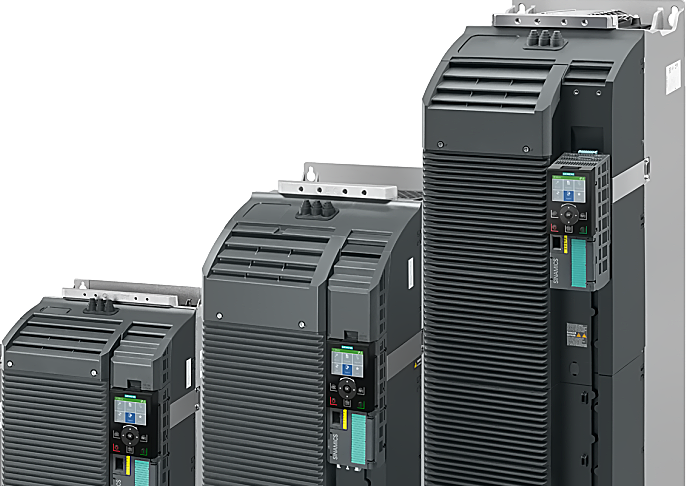
Technology has overhauled the industrial process so as to enhance operation speed and lower the cost. Some of the developments include Variable Frequency Drive Uses and Application, which are an essential step in controlling motor speed and energy efficiency. This blog will help one identify what a Variable Frequency Drive (VFD) is, how it works, and application in various industries.
What is a Variable Frequency Drive?
A variable frequency drive, or VFD, is a type of electrical device that varies the frequency and hence the voltage of the power running to the electric motor while controlling the former’s speed and torque. The use of VFDs is generally found in applications where energy efficiency, speed control, and process optimization are necessary. The use of a variable frequency drive will dramatically reduce power consumption and prolong the lifespan of machinery used in the industries.
How Does a Variable Frequency Drive Work?
A VFD converts incoming AC power to DC, then back again to AC, but this time at the required frequency. That conversion makes for very accurate motor speed control; hence, all the savings due to the inefficiency of wasteful energy use. The principal parts of a VFD include:
- Rectifier – Converts AC power to DC power.
- DC Bus – This stores and smoothes the DC power.
- Inverter – It changes the DC back to AC at the required frequency.
- Control Unit – It controls the speed and torque produced by the motor based on input from the users.
Benefits of Using a Variable Frequency Drive
Variable Frequency Drive applications are widely available and beneficial for many sectors. Some of the most crucial benefits of using Variable Frequency Drive include:
- Energy Efficiency: VFDs minimize waste of energy produced by motors; hence, consumers can save considerable amounts on their electricity bills.
- Extended Equipment Life: Soft starters and stoppers do not contribute to wear and tear of mechanical parts and the motor.
- Improved Process Control: Precise speed regulation enhances performance and product quality.
- Reduced Maintenance Costs: VFDs minimize mechanical stress, leading to fewer breakdowns and maintenance needs.
- Lower Carbon Footprint: Energy efficient operation contributes towards environmental sustainability.
Industries That Use Variable Frequency Drives
1. HVAC Systems
VFDs are significantly applied to the Heating, Ventilation, and Air Conditioning system for speed control of a fan and a pump. Therefore, it will be possible to turn off the use of energy without losing temperatures and quality of air.
2. Manufacturing Industry
VFDs employed in the manufacturing sectors regulate conveyor belts, mixers, and robotic systems. This ensures continuous operation, reduces mechanical stress, and increases productivity.
3. Water and Wastewater Treatment
Water treatment plants employ VFDs in the management of pumps and aerators where water flow is optimized, conserving more energy. This calls for efficiency and minimization of operational costs.
4. Agriculture and Irrigation
Farmers apply VFDs in irrigation to manage the supply of irrigation pumps where a better quantum of water supply goes to crops without consuming all the energy. This improves crop yield without wasting much resources.
5. Oil and Gas Industry
The oil and gas industry uses VFDs in drilling, pumping, and refining. In this way, the company can enhance efficiency and safety by varying motor speeds according to the process requirements.
6. Mining and Metal Processing
VFDs are also used in mining and metal industries for regulating conveyor belts, crushers, and grinding mills. This helps to utilize resources in an efficient manner and minimizes wear and tear on equipment.
7. Renewable Energy Systems
Wind and solar energy systems use VFDs to regulate generator speeds, which ensures stable power output and efficient energy conversion.
8. Food and Beverage Industry
VFDs are applied in food processing plants in packaging lines, mixers, and refrigeration units to maintain the quality of the products and minimize energy consumption.
Choosing the Right Variable Frequency Drive
When selecting a VFD, consider the following factors:
- Motor Compatibility: Ensure the VFD is suitable for the motor type and voltage.
- Load Requirements: The load requirement and power capacity along with torque.
- Environmental Conditions: Environmental conditions that the VFD is supposed to work in.
- Control Features: Look for features like remote monitoring, programmable settings, and safety protections.
Common Misconceptions About Variable Frequency Drives
Despite their numerous benefits, there are some misconceptions about VFDs. Let’s clear them up:
- VFDs Are Expensive – The long-term saving in energy and maintenance outweighs the investment even though the initial cost is high.
- Only Large Industries Use VFDs – VFDs are beneficial for small businesses as well, helping them cut energy costs and improve efficiency.
- Installation is Complex – Modern VFDs are user-friendly and come with easy installation guides.
- VFDs Can Damage Motors – When applied correctly, VFDs really protect motors because they reduce the stress and also speed control will be smooth.
Future Trends in Variable Frequency Drive Uses
With advancements in technology, VFDs are becoming more efficient and smarter. Some emerging trends include:
- Integration with IoT: Smart VFDs can be monitored and controlled remotely, increasing efficiency and minimizing downtime.
- Energy Harvesting Systems: New VFDs are designed to recover and reuse wasted energy.
- AI-Based Automation: Artificial intelligence is being included in VFDs to perform with optimal conditions, as all this data are in real-time.
Conclusion
Variable Frequency Drive Uses are finding expansion in diverse sectors. Such as energy saving, cost effectiveness, and optimized process control across multiple industries, the VFD is changing how motors operate across industries like HVAC, manufacturing, agriculture, or renewable energy. Using VFD technology can achieve better efficiency for business operations while cutting down costs, which help save the future for the globe.
Industrial process optimization by VFD There are numerous top-class offerings from world leaders which will boost up your industrial process. Saving the right VFD will help bring significant long-term advantages for your operation.


